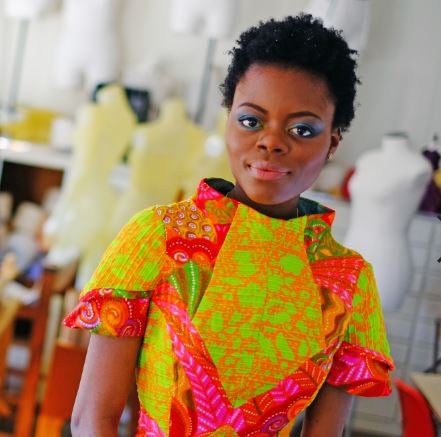Accelerated B.S. to M.S. in Textiles, Fashion Merchandising, and Design

Curriculum
The total number of credits required for a BS is 120 credits and 33 credits for the MS. Only the non-thesis option requiring 33 credits is open to ABM students.
Up to one-third of the required credits at the 400/500 level will count for both undergraduate and graduate credit (see below for examples). These courses include those 400-level courses in other disciplines that count for graduate credit. In cases where non-TMD courses are applied to the graduate program of study, half of the total credits for the MS degree must be in TMD.
Bachelor’s Requirements
Please review the requirements for your bachelor’s degree:
B.S. Textiles, Fashion Merchandising and Design
B.S. Textiles Marketing
For all other majors review your curriculum sheet on URI’s curriculum sheets page.
Master’s Requirements
Requirements for the MS degree can be found here. Please reference the non-thesis option.
Specializations:
TMD offers three specializations at the graduate level: historic textiles and fashion (including cultural studies and conservation), fashion merchandising, and textile science. Students must complete the requirements for the non-thesis option in one of the three specializations.
Examples of your Academic Path
Below, please find three examples of how students enrolled in TMD as TMD or TM majors, or TMD minors, may apply credits toward the MS as part of an ABM program and complete their degrees in a timely fashion.
A student who majors in Textiles Marketing or Textiles, Fashion Merchandising, and Design, and seeks the Fashion Merchandising track:
- Takes TMD433 and at two other 400-level courses as part of their BS degree requirements (120 credits).
- The student takes MBA500, TMD 511, TMD 512, TMD 524, plus 12 other credits over the course of the academic year. Summer internships are offered under the course number TMD 530.
- The student completes the degree in five years.
A student is interested in the Historic track:
- Takes TMD 424, 440, and 441 for a total of 9 credits.
- The student completes an internship (TMD 530) in the summer (3 cr.)
- The student completes the degree in one extra year.
A student who is interested in textile science:
- Takes TMD 403, 413, and 433 as part of the undergraduate program (9 cr).
- Takes a stats course (STA 409, MBA 500)
- Takes TMD TMD 511, TMD 512, TMD 540.
- Takes other TMD courses, CHM or Engineering courses, including an internship, to reach 24 credits.
Examples of undergraduate courses that can double count include: TMD403, TMD424, TMD426, TMD 432, TMD433, TMD434, TMD440, TMD 441, TMD 442, TMD452, and TMD458. Courses outside the TMD Department that count for graduate credits, such as STA 409, can double count.
Only courses taken at URI can double count towards this accelerated program.
